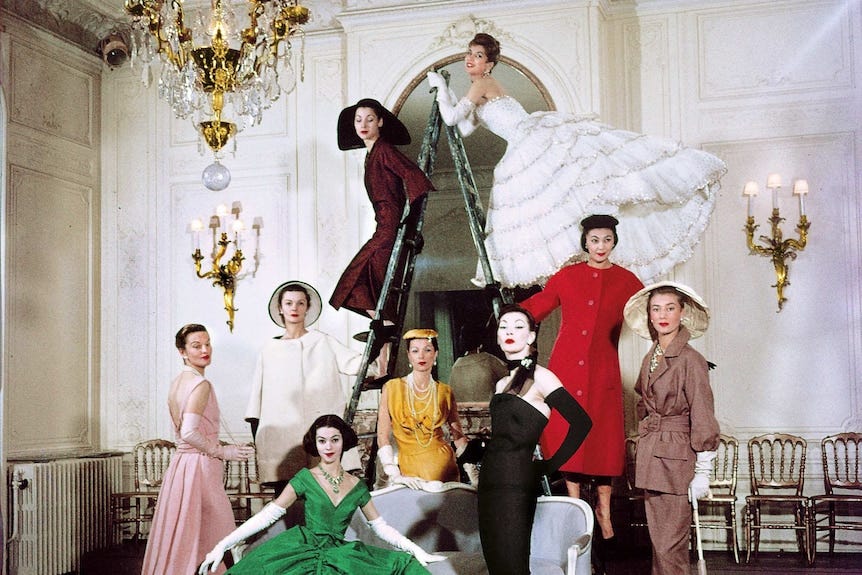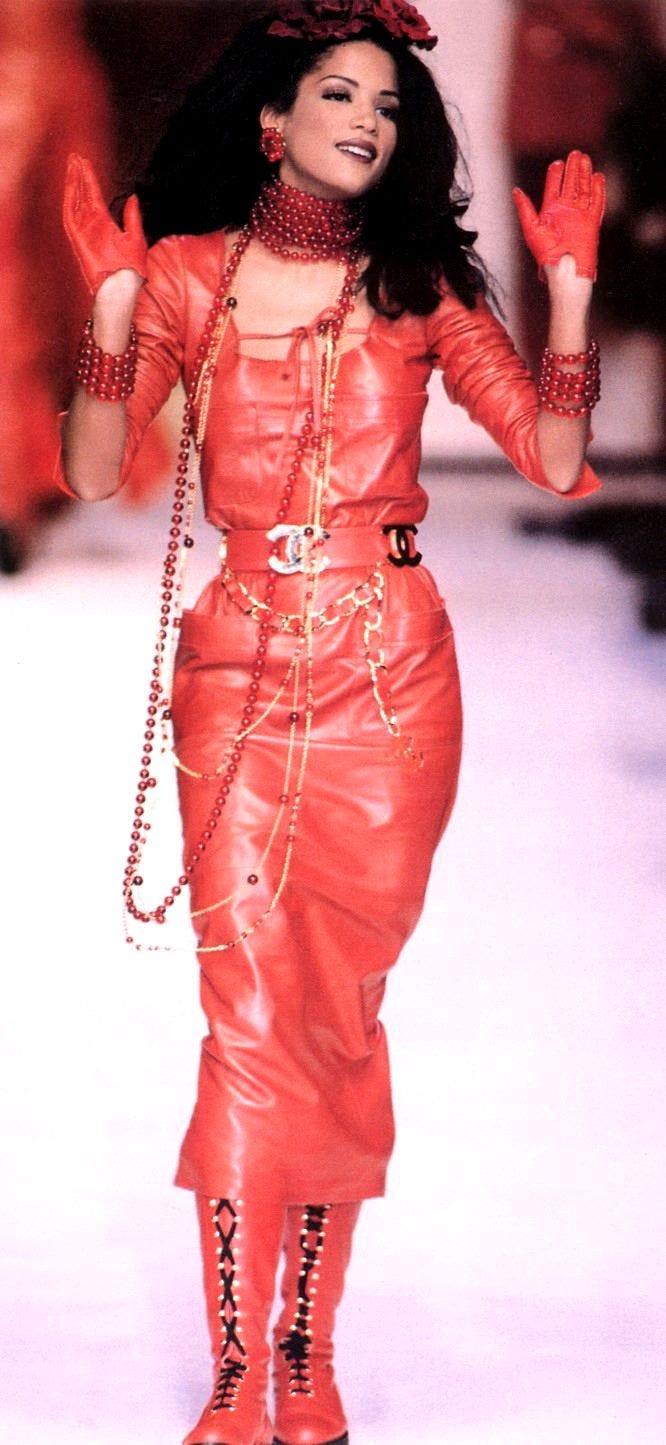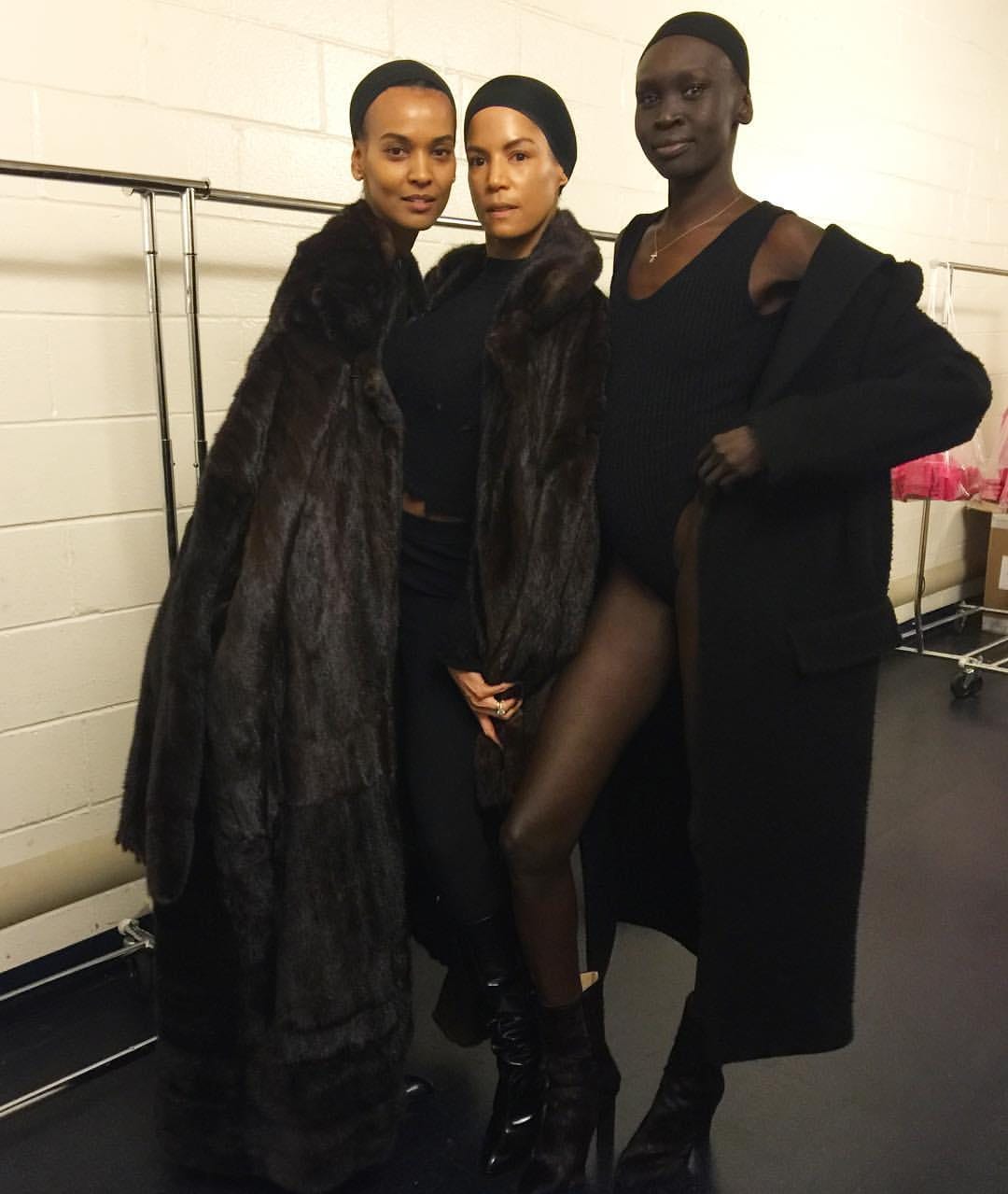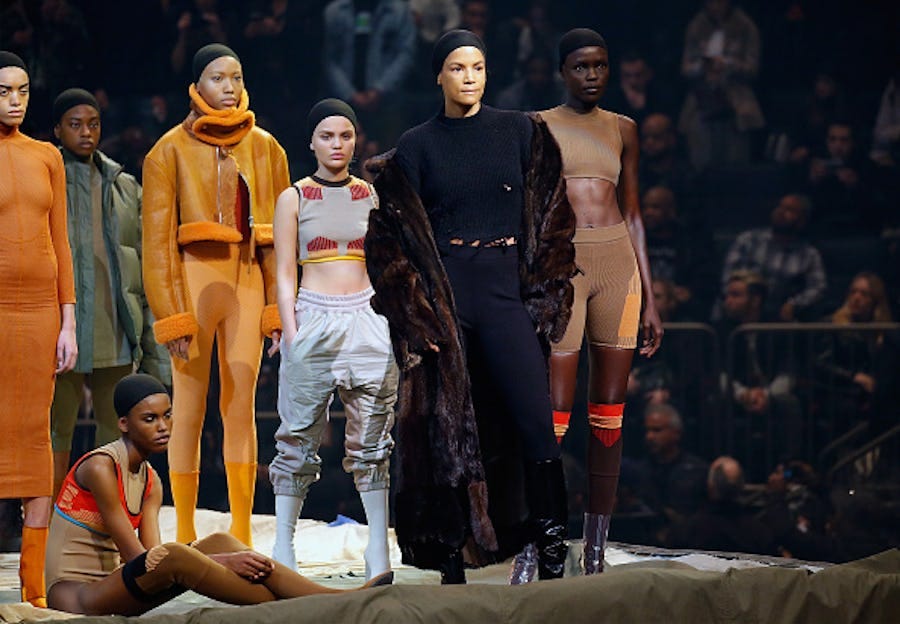The History of Runway Modeling
From Someone Who’s Walked the Walk
The Runway as Ritual
Long before TikTok livestreams or Instagram reels, the runway was a ritual — one that dates back to the late 1800s.

Charles Frederick Worth, often called the father of haute couture, was the first to replace wax mannequins with living women to model his designs. It was a revolutionary idea: clothes in motion, bodies breathing life into fabric.

By the 1950s, Paris couture houses had codified the practice. Picture Christian Dior or Cristóbal Balenciaga in hushed salons, their “mannequins” gliding silently past seated clients. The model’s role was not to be known but to be a vessel — a conduit between fabric and desire. No theatrics, no headlines, just commerce cloaked in elegance.
By the time I cut my teeth in Paris in the 1990s, that ritual had exploded into a global spectacle. I wasn’t just a mannequin — I was part of the first generation of supermodels, women whose names meant as much as the clothes on our backs. I was a favorite of Azzedine Alaïa, Karl Lagerfeld at Chanel, and, in New York, Isaac Mizrahi, Todd Oldham, and Calvin Klein. The runway was no longer discreet; it was loud, lit, and ravenous for personality.
“Once upon a time, we were mannequins. By the ’90s, we were supernovas.”
Paris, 1990s: My Education in Couture
My earliest shows in Paris were like graduate school in the art of fashion. Alaïa taught me discipline: his fittings could last hours, every seam considered, every hem a question of geometry.
Karl at Chanel taught me theater: the way a grand staircase or a mirrored salon could transform silk into a storyline. At Calvin, minimalism became religion — it was about stripping everything down until only perfection remained.
I wasn’t just walking — I was learning how fashion uses the body as canvas, billboard, and mirror of its cultural moment. The ’90s were bold, excessive, glamorous — and so were the women who walked.
When Fashion Hit the Airwaves
If the runway was once a ritual reserved for the initiated, the late ’80s and early ’90s blew it wide open. For the first time, fashion shows weren’t just for editors and buyers — they were beamed into living rooms around the world.
Elsa Klensch’s Style on CNN was the original front row for the masses. Suddenly, couture that once belonged only to Parisian salons was appearing on Saturday morning television, narrated in that clipped, deliciously authoritative voice.
Around the same time, FashionTV arrived, serving 24/7 catwalk footage like a new MTV for fashion obsessives. For the first time in history, a teenager in Detroit could see the same Chanel show as an heiress on Avenue Montaigne — and I know this, because I was that model on the screen, and my own mother was that teenager-at-heart watching from Detroit.
Later, I co-hosted Style with Tim Gunn, helping translate the runway into a different language: accessible, educational, even a little cheeky. It wasn’t just about showing clothes; it was about showing how fashion functioned as culture.
Of course, the runway was also making its own cinematic debut. In 1995, I appeared in Unzipped, Douglas Keeve’s documentary about Isaac Mizrahi’s collection. Shot partly in black and white, it was intimate and unflinching — one of the first times audiences saw the backstage frenzy, the fittings, the personalities. It became a cultural artifact, proof that fashion wasn’t just fantasy. It was labor, theater, sometimes chaos, always obsession.
“Television made us household names before Instagram made us hashtags.”
The Supermodel Era
The 1990s were the golden age of the supermodel. Linda, Naomi, Christy, Cindy, Claudia — and a handful of us who were lucky enough to share that runway spotlight. When George Michael’s Freedom! ’90 played at Gianni Versace’s Spring 1991 show, the fashion world realized the models themselves were the main event.
And in 1992, I had my own indelible Versace moment: the infamous safety-pin dress debuted on my back. That’s the power of the supermodel era — clothes and woman fusing into a single icon. Think Elizabeth Hurley, mere days later, strutting thr red carpet in that same dress which cemented her status as fashion icon.
For me, those years were a blur of airports, fittings, and floodlights — but also a revelation. We weren’t just walking clothes. We were walking contradictions: powerful and fragile, glamorous and exhausted, anonymous one minute and household names the next.
From Secret Ritual to Stadium Spectacle
By the late ’90s, the runway had outgrown its salon origins. The first Victoria’s Secret shows, which I walked, turned lingerie into stadium theater, complete with angel wings and millions watching at home. What had once been Parisian discretion became mass-market fantasy, live-broadcast and replayed endlessly.
Fast-forward to 2016: I was on stage at Madison Square Garden for Kanye West’s Yeezy Season 3. It wasn’t just a fashion show — it was a cultural event, blending music, celebrity, and sports-fan energy into one. Kanye’s album The Life of Pablo debuted as we stood in formation. Twenty thousand people in the arena, millions more streaming it live.
“From fifty guests in Alaïa’s atelier to twenty thousand in Madison Square Garden — the runway had gone from secret ritual to Super Bowl.”
The Theater of Fashion
Not every runway was about stadium scale. Some became high art. Alexander McQueen staged fashion as theater — models spray-painted by robots, Kate Moss appearing as a hologram, runways turned into chess boards or glass cases. John Galliano, too, elevated the catwalk into narrative spectacle.
For an anthropologist, these shows are rituals of transformation: the runway as altar, models as priestesses, fashion as both offering and prophecy.
The Digital Now and AI Future
Today, the runway exists in a different kind of theater: the theater of screens. Instagram and TikTok have democratized fashion to the point where the real front row is in your hand. Jacquemus stages lavender field catwalks as much for the drone footage as the buyers. Balenciaga creates dystopian worlds built for virality.
And then there’s AI. Virtual models like Shudu or Lil Miquela are avatars who never age, never bruise, never need a break. Designers experiment with digital twins and 3D samples before a stitch is sewn. The question is no longer “what’s next season?” but “what’s next platform?”
Still, something vital happens when bodies move in real time, when the room vibrates with music and lights, when the audience collectively gasps. AI can replicate the image, but never the sensation.
Where the Runway Goes From Here
The future is hybrid. A few hundred VIPs in the room, millions online. Some models human, some AI. Clothes moving not just down catwalks but across screens, inside games, inside feeds. But as long as there are garments, there will be the need to see them live, on bodies, in motion.
I know, because I’m still out there — still walking runways in my sixties. That longevity is itself anthropology: proof that beauty, resilience, and style don’t have expiration dates.
One Last Thing…
The runway isn’t disappearing. It’s mutating. But the ritual endures: clothes, bodies, audience, desire. As long as those ingredients exist, the catwalk will remain our most enduring stage.








Loved this. I never knew the history. How fascinating!